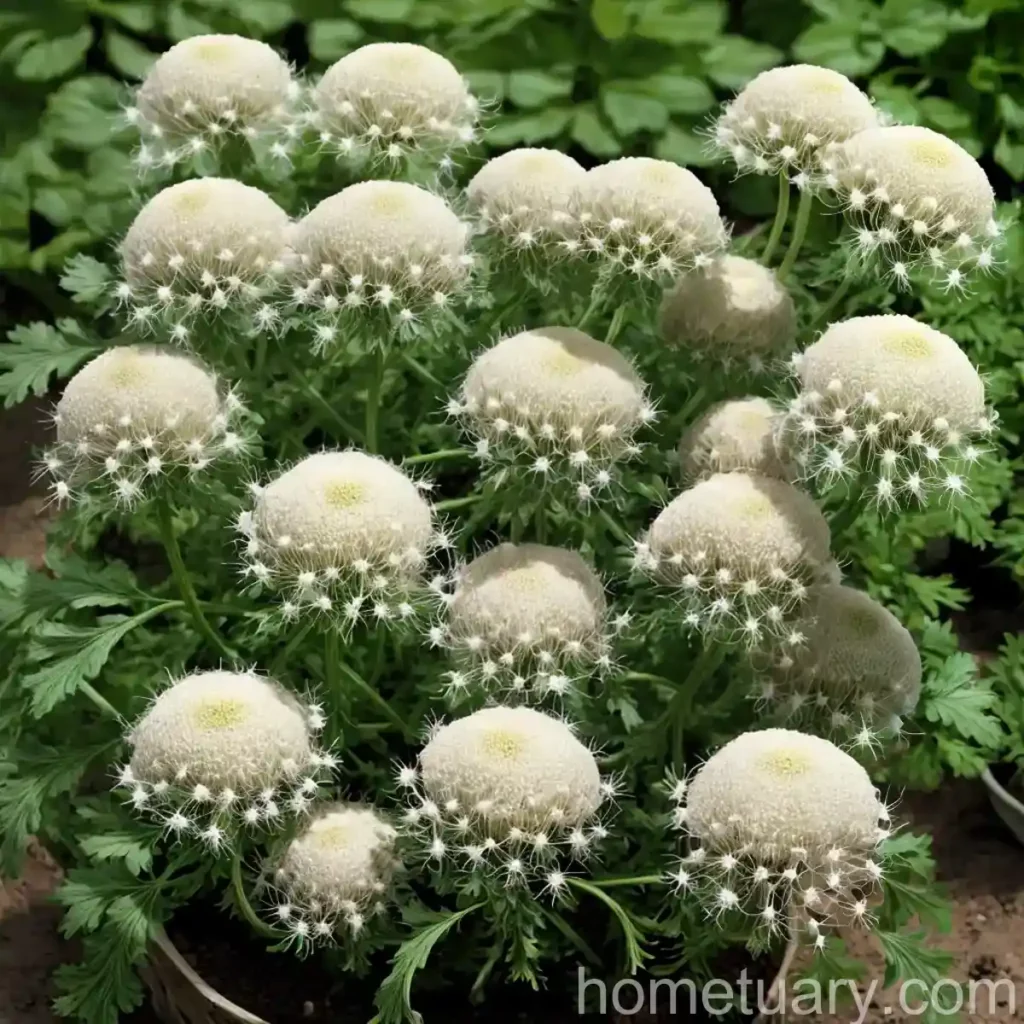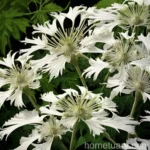Celeriac (Apium graveolens var. rapaceum ‘Diamant’): A Comprehensive Guide to Cultivation and Care
Celeriac, scientifically known as Apium graveolens var. rapaceum ‘Diamant’, is a distinct and versatile variety of celery, cultivated for its flavorful and aromatic root. This unique vegetable has gained attention in the culinary world due to its exceptional taste and diverse uses in cuisines. In this extensive guide, we will delve into the various aspects of cultivating and caring for celeriac – from planting and propagation to maintenance, harvesting, culinary uses, and management of pests and diseases.
What is Celeriac?
Celeriac, also known as turnip-rooted celery or knob celery, is a specific cultivar of celery which is cultivated primarily for its robust, enlarged, and edible root. While it belongs to the same species as celery (Apium graveolens), its edible part significantly differs from the familiar stalks of celery. The root of celeriac boasts a distinct flavor that is a delightful mix of celery and parsley, offering a remarkable addition to various culinary dishes.
Key Takeaways – Celeriac (Apium graveolens var. rapaceum ‘Diamant’)
- Plant Name: Celeriac (Apium graveolens var. rapaceum ‘Diamant’)
- Culinary Uses: Versatile root vegetable with unique flavor suitable for a wide range of dishes.
- Cultivation Benefits: Nutrient-rich, adaptable to various soil types, and exhibits cold tolerance.
- Nutritional Value: Rich in vitamins and minerals, particularly high in fiber, vitamin K, and phosphorus.
- Pest and Disease Management: Susceptible to certain pests and fungal diseases, requiring proactive prevention and management measures.
- Gardening Applications: Suitable for both traditional and container gardening, offering flexibility in cultivation.
Culture
Understanding the cultural preferences and requirements of celeriac is crucial for successfully growing this crop. Celeriac thrives in cool climates and requires diligent care to achieve optimal growth and yield.
Uses
The versatile celeriac can be utilized in an array of culinary applications, making it an invaluable addition to any kitchen. Its uses extend beyond its root, as the leaves and stalks of celeriac also offer a subtly robust flavor that can enhance the profile of various dishes.
Culinary Uses
Celeriac can be incorporated into a myriad of recipes to elevate their flavor profiles, including:
– Soups and stews
– Salads and slaws
– Roasted dishes
– Mashed recipes
– Healthy alternatives in various recipes
Water
Celeriac prefers consistently moist but well-draining soil. Adequate irrigation is fundamental to support the growth and development of its substantial root.
- Watering Needs: Provide regular and thorough watering to ensure the soil remains consistently moist without becoming waterlogged.
Sunlight
Moderate to full sun exposure is ideal for celeriac. It thrives in locations with ample sunlight, which is essential for robust and healthy growth.
- Sun Requirements: Position celeriac in an area where it can receive at least six hours of sunlight daily for optimal growth.
Fertilizer
Fertilization is a critical aspect of celeriac cultivation, contributing to the development of strong foliage and a substantial root.
- Fertilization Schedule: Apply a balanced fertilizer with a higher potassium content to support root development, particularly during the early growth stages.
Soil
The soil composition and structure directly influence the growth and overall health of celeriac. Optimal soil conditions are essential for cultivating thriving plants and achieving an abundant harvest.
- Soil Requirements: Well-draining, fertile soil with a slightly acidic to neutral pH (6.5-7.0) is ideal for celeriac cultivation.
Pruning
Pruning serves as an essential practice for optimizing the growth and development of celeriac, contributing to improved airflow and the removal of diseased or damaged plant parts.
- Pruning Techniques: Regularly remove dead or yellowing leaves while also eliminating any malformed or stunted stems to encourage robust growth.
Propagation
Celeriac is primarily propagated through seeds. The propagation process requires precision and attention to detail to ensure successful germination and establishment of healthy seedlings.
- Seed Germination: Sow celeriac seeds indoors early in the growing season, providing optimal conditions for germination and early growth.
Container Popularity
Celeriac can be effectively grown in containers, offering flexibility and convenience for gardeners with limited space. Container gardening allows for the successful cultivation of celeriac in various settings, including patios, balconies, and urban environments.
- Advantages of Container Gardening: Ideal for compact spaces, offers mobility, and enables better control of soil conditions.
Container Common Diseases
When cultivating celeriac in containers, it is essential to be aware of the common diseases that can affect the plants and implement preventive measures for successful cultivation.
- Key Diseases: Focus on mitigating the risks of fungal diseases such as damping-off and root rot in container-grown celeriac.
Disease Diagnosis
Vigilant monitoring and prompt identification of diseases are paramount to mitigate the impact and limit the spread, preserving the health and vigor of celeriac plants.
- Symptom Recognition: Learn to recognize common disease symptoms, including leaf discoloration, wilting, and unusual growth patterns in celeriac plants.
Common Pests
Celeriac is susceptible to certain pests that can potentially damage the foliage and roots, necessitating appropriate pest management strategies to ensure plant health and productivity.
- Pest Identification: Familiarize yourself with common pests such as aphids, carrot flies, and celery leaf miners that may affect celeriac plants.
Botanist’s Tips
- Regularly monitor for signs of pest infestations and diseases, taking proactive measures to address any issues promptly.
- Provide consistent and appropriate care throughout the growing season, focusing on the specific requirements of celeriac.
Fun Facts
- Despite its knobby appearance, the root of celeriac possesses a remarkably delicate and subtly sweet flavor, making it a standout ingredient in various dishes.
- The leaves and stalks of celeriac are also edible and can be used to impart a hint of celery flavor to culinary creations.
Links to External Resources
To further explore the world of celeriac cultivation, culinary uses, and health benefits, consider the following reputable resources:
1. The Royal Horticultural Society: Celeriac Growing Guide
2. University of Maryland Extension: Celeriac Fact Sheet
3. University of Florida IFAS Extension: Celeriac Production Guide
In the next sections, we will delve into the detailed aspects of celeriac cultivation and care, covering essential topics such as soil requirements, watering needs, pest and disease management, and culinary uses. Let’s embark on an enriching journey into the world of cultivating and appreciating the remarkable celeriac (Apium graveolens var. rapaceum ‘Diamant’).















